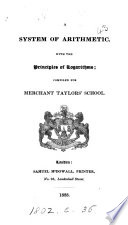 | Richard Frederick Clarke (the elder.) - 1833 - 158 pages
...terms, when necessary, into the same name, and the third into the lowest denomination mentioned. 4th. Multiply the second and third terms together, and divide the product by the first, and the quotient will be the fourth term, or answer, in the same denomination the third term was left... | |
 | Daniel Adams - Arithmetic - 1833 - 268 pages
...the two remaining numbers for the second term, and the greater for the first ; and, in either case, multiply the second and third terms together, and divide the product by the first for the answer, which will always be of the same denomination as ftie third term. Note 1. If the first... | |
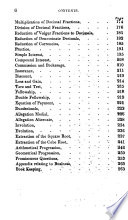 | Charles Davies - Arithmetic - 1833 - 284 pages
...least of the remaining numbers in the first place, but when it is less, place the greater there. Then multiply the second and third terms together and divide the product by the first term : the quo tif.nl will be the fourth term or answer sought, and •will be of the same denomination... | |
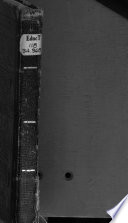 | Frederick Emerson - Arithmetic - 1832 - 344 pages
...than the third, make the less of the two remaining terms the second term, and the greater the first. Multiply the second and third terms together, and divide the product by the first term: the quotient will be the fourth term, or answer. If there are different denominations in the... | |
 | Frederick Emerson - Arithmetic - 1834 - 300 pages
...the fourth, make the less of the two remaining terms the first term, and the greater the second: then multiply the second and third terms together, and divide the product by the first term: the quotient will be the fourth term, or answer. 1. Ifl buy 871 yards of cotton cloth for 78... | |
 | George Alfred - Arithmetic - 1834 - 336 pages
...require it. 6. When all the terms of the stating are reduced as above directed, (if necessary) — then multiply the second and third terms together, and divide the product by the^rst term — the quotient will be the fourth term or answer to the question, and of Kke name with... | |
 | Francis Walkingame - 1835 - 270 pages
...proportion, if necessary, to the same name, and the third to the lowest denomination mentioned in it, then multiply the second and third terms together, and...the product by the first; the quotient will be the answer to the question in the same denomination the third term was reduced to, and must be reduced... | |
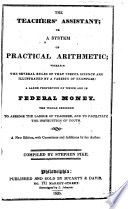 | Stephen Pike - Arithmetic - 1835 - 210 pages
...and if the third term consist of several denominations, reduce it to its lowest denomination; then, Multiply the second and third terms together, and divide the product by the first term: the quotient will je the answer. Note. — The product of the second and third termsis of he... | |
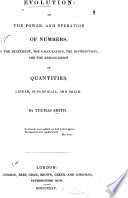 | Thomas Smith (of Liverpool.) - Arithmetic - 1835 - 180 pages
...made it fifteen times too large, divide it by this 15; that is to say, we have the same result if we multiply the second and third terms together, and divide the product by the first. AND THIS is THE RULE ; this, when the terms are properly placed, this MULTIPLYING THE SECOND AND THE... | |
 | A. Turnbull - Arithmetic - 1836 - 368 pages
...then reduce the third term to the least denomination contained in it. The three terms thus reduced, we multiply the second and third terms together, and divide the product by the first, and the quotient will be the fourth term in the same denomination, to which the third term has been... | |
| |